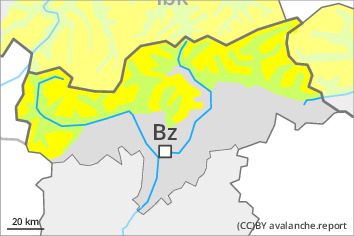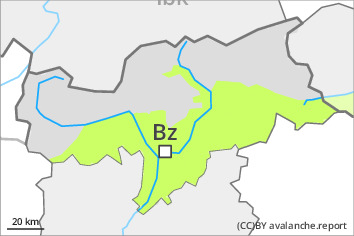
Danger level
 | 2200m |
|  |
|  |

Fresh wind slabs require caution.
As a consequence of new snow and a storm force wind from northwesterly directions, sometimes avalanche prone wind slabs will form. These avalanche prone locations are to be found in particular on northwest to north to east facing aspects above approximately 2200 m. Avalanches can in isolated cases be released, even by a single winter sport participant, especially on very steep shady slopes, as well as adjacent to ridgelines and in gullies and bowls. At elevated altitudes the likelihood of avalanches being released is greater.
Avalanches can additionally in very isolated cases be released in near-ground layers at high altitude. These avalanche prone locations are to be found in particular on very steep shady slopes and at transitions from a shallow to a deep snowpack, especially adjacent to ridgelines. These avalanche prone locations are very rare but are difficult to recognise.
Snowpack
dp.6: cold, loose snow and wind
dp.1: deep persistent weak layer
In some regions up to 15 cm of snow will fall. As a consequence of a storm force northwesterly wind, rather small wind slabs will form. The fresh snow and in particular the wind slabs are poorly bonded with the old snowpack in some places on shady slopes at elevated altitudes.
Faceted weak layers exist in the old snowpack, in particular on shady slopes at high altitude in areas where the snow cover is rather shallow.
Tendency
Fresh wind slabs require caution. Individual mostly small loose snow avalanches are to be expected.


